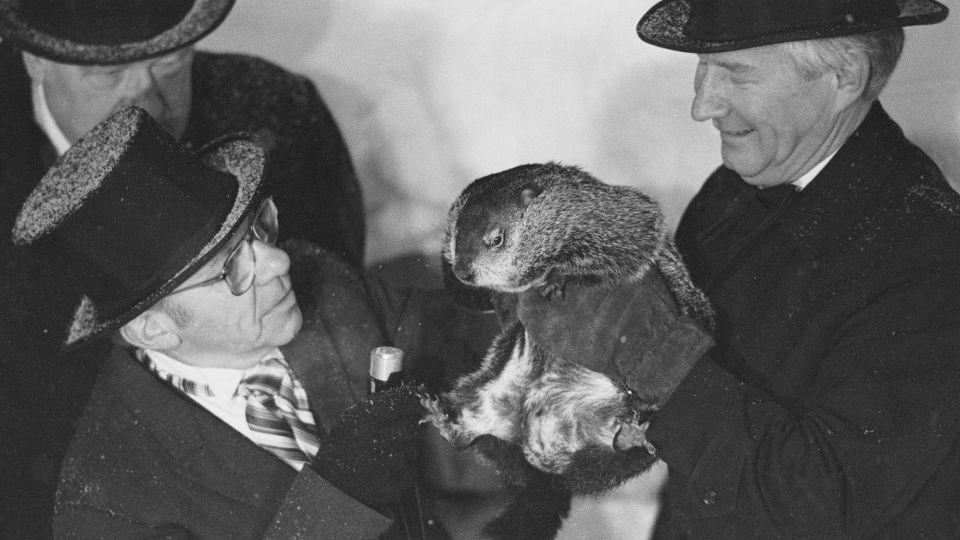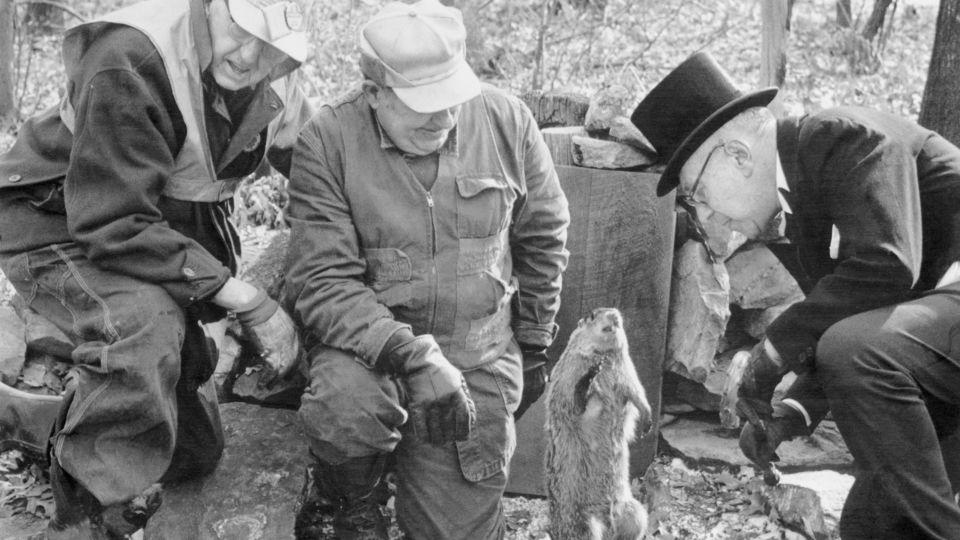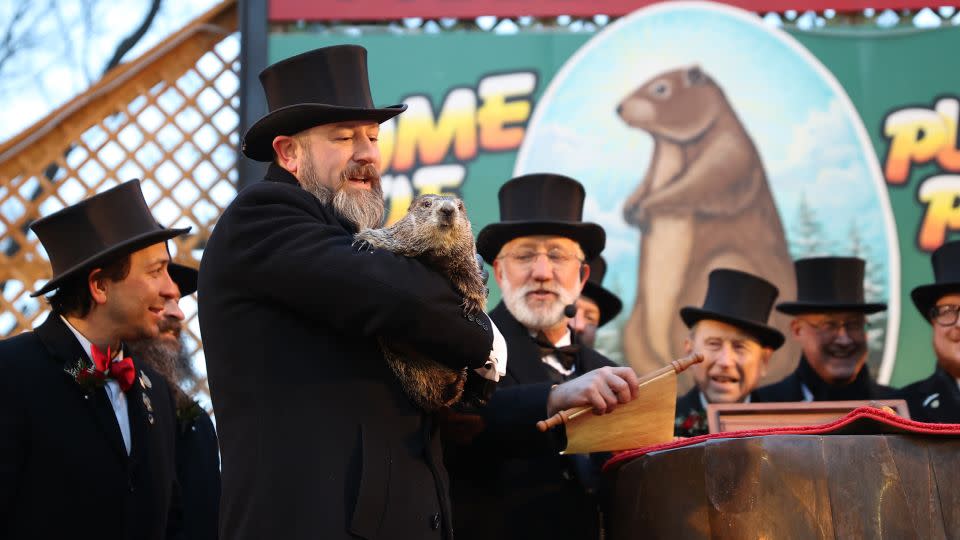Every year, Americans in snowy states wait with bated breath to see whether Punxsutawney Phil will spot his shadow. And every year, we take Phil’s weather forecast – six more weeks of winter, or an early spring? – as gospel, meteorology be damned.
It’s about as strange (and cute) as holidays get. So how did Groundhog Day go from a kooky local tradition to an annual celebration even those of us who don’t worry about winter can find the fun in?
We explore Groundhog Day’s origins from a tiny event to an American holiday we can all be proud of. Spoiler: there are badgers, immortality and at least one groundhog on the menu.
Groundhog Day was originally celebrated with … a badger?
Every February 2, the members of the Punxsutawney Groundhog Club trek to Gobbler’s Knob, Punxsutawney Phil’s official home just outside of town. Donning top hats and tuxedos, the group waits for Phil to leave his burrow, and if he sees his shadow, the town gets six more weeks of winter. If he doesn’t see his shadow, Punxsutawney gets an early spring.
But the early seeds of the Groundhog Day we know today were planted thousands of years ago, according to Dan Yoder, a folklorist “born and raised in the Groundhog Country of Central Pennsylvania” who penned the definitive history of the folk holiday turned national tradition.
The holiday evolved over centuries as it was observed by different groups, from the Celts to Germans to the Pennsylvania Dutch and eventually, by those in other parts of the US. Its evolution began in the pre-Christian era of Western Europe, when the Celtic world was the predominant cultural force in the region. In the Celtic year, instead of solstices, there were four dates – similar to the dates we use today to demarcate the seasons – that were the “turning points” of the year. One of them, per Yoder, was February 1.
These turning point dates were so essential to Europeans at the time that they Christianized them when Western Europe widely adopted Christianity. While May 1 became May Day, and November 1 became All Saints’ Day, the February 1 holiday was pushed to the following day – and would eventually become Groundhog Day.
First, though, the February holiday was known as “Candlemas,” a day on which Christians brought candles to church to be blessed – a sign of a source of light and warmth for winter. But like the other three “turning points,” it was still a “weather-important” date that signified a change in the seasons, Yoder wrote.
And when agriculture was the biggest, if not only, industry of the region, predicting the weather became something of a ritual viewed as essential to the health of crops and townsfolk. There was some mysticism attached to the holiday, too, as seen in a poem from 1678 penned by the naturalist John Ray:
“If Candlemas day be fair and bright
Winter will have another flight
If on Candlemas day it be showre and rain
Winter is gone and will not come again.”
The animal meteorology element wasn’t folded in until German speakers came to parts of Europe formerly populated by the Celtic people and brought their own beliefs to the holiday – except, instead of a groundhog, they hedged their bets on a badger. An old European encyclopedia Yoder cited points to the German badger as the “Candlemas weather prophet,” though it’s not clear why. (Sources including the state of Pennsylvania and the Punxsutawney Groundhog Club say the Germans also considered hedgehogs as harbingers of the new season.) When the holiday came overseas with the Pennsylvania Dutch, they traded the badger for an American groundhog, equally shy and subterranean and likely more prevalent in the area in which they settled.
Many sources claim that the original Groundhog Day took place in 1887, when residents of Punxsutawney set out to Gobbler’s Knob, known as Phil’s “official” home, but the first piece of evidence Yoder found of townspeople trusting a groundhog for the weather, a diary entry, was dated 1840. And since Pennsylvania Dutch immigrants mostly arrived in the mid-to-late 18th century, it’s likely that the holiday existed for decades earlier than we have recorded, per the Library of Congress.
From a dinner plate to a pedestal: Phil’s journey to stardom
Part of the reason so many of us know about Groundhog Day is due to the 1993 film of the same name. The phrase “groundhog day” even became shorthand for that déjà vu feeling of reliving the same day over and over. But Punxsutawney Phil became something of a cult celebrity even before the film debuted – he appeared on the “Today” show in 1960, according to the York Daily Record, and visited the White House in 1986. He even charmed Oprah Winfrey, appearing on her show in 1995.
Before he was a celebrity, though, he was lunch. In a terrible twist, the earliest Groundhog Days of the 19th century involved devouring poor Phil after he made his prediction. The year 1887 was the year of the “Groundhog Picnic,” Yoder said. Pennsylvania historian Christopher Davis wrote that locals cooked up groundhog as a “special local dish,” served at the Punxsutawney Elk Lodge, whose members would go on to create the town’s Groundhog Club. Diners were “pleased at how tender” the poor groundhog’s meat was, Davis said.
Groundhog meat eventually left the menu of Punxsutawney establishments as the townsfolk realized his worth. In the 1960s, Phil got his name, a nod to “King Phillip,” per the Groundhog Club. (The specific King Phillip he was named for is unclear; Mental Floss pointed out that there has not been a King Phillip of Germany, where many Pennsylvania settlers came from, in centuries). Before that, he was simply “Br’er Groundhog.”
Punxsutawney Phil’s popularity has inspired several imitators: There’s Staten Island Chuck in New York, Pierre C. Shadeaux of Louisiana and Thistle the Whistle-pig of Ohio, to name a few fellow groundhog weather prognosticators. But there’s only one Phil, and he’s the original.
Despite their early practice of noshing on Phil’s family, the Punxsutawney Groundhog Club avers that there has only been one Phil since 1886. He’s given an “elixir of life” every year at the summertime Groundhog Picnic, which “magically gives him seven more years of life,” the club said. (Groundhogs can live up to six years in the wild and up to 14 in captivity, per PBS’ Nature, so do with that what you will.)
Phil also doesn’t have to spend the offseason alone. He’s married to Phyliss, per the Groundhog Club, who does not receive the same elixir of life and so will not live forever like her groundhog husband. There is no official word on how many wives Phil has outlived through over the years.
As for his accuracy in weather-predicting – Phil’s hit or miss. He often sees his shadow – 108 times, before this year, per the York Daily Record, which has analyzed every single one of Phil’s official weather predictions since the 19th century. Two years ago, Phil saw his shadow, which coincided with a huge winter storm.
This year, though, Phil emerged without spotting his shadow, projecting an early spring – a welcome surprise for those of us already shivering through February.
For more CNN news and newsletters create an account at CNN.com



